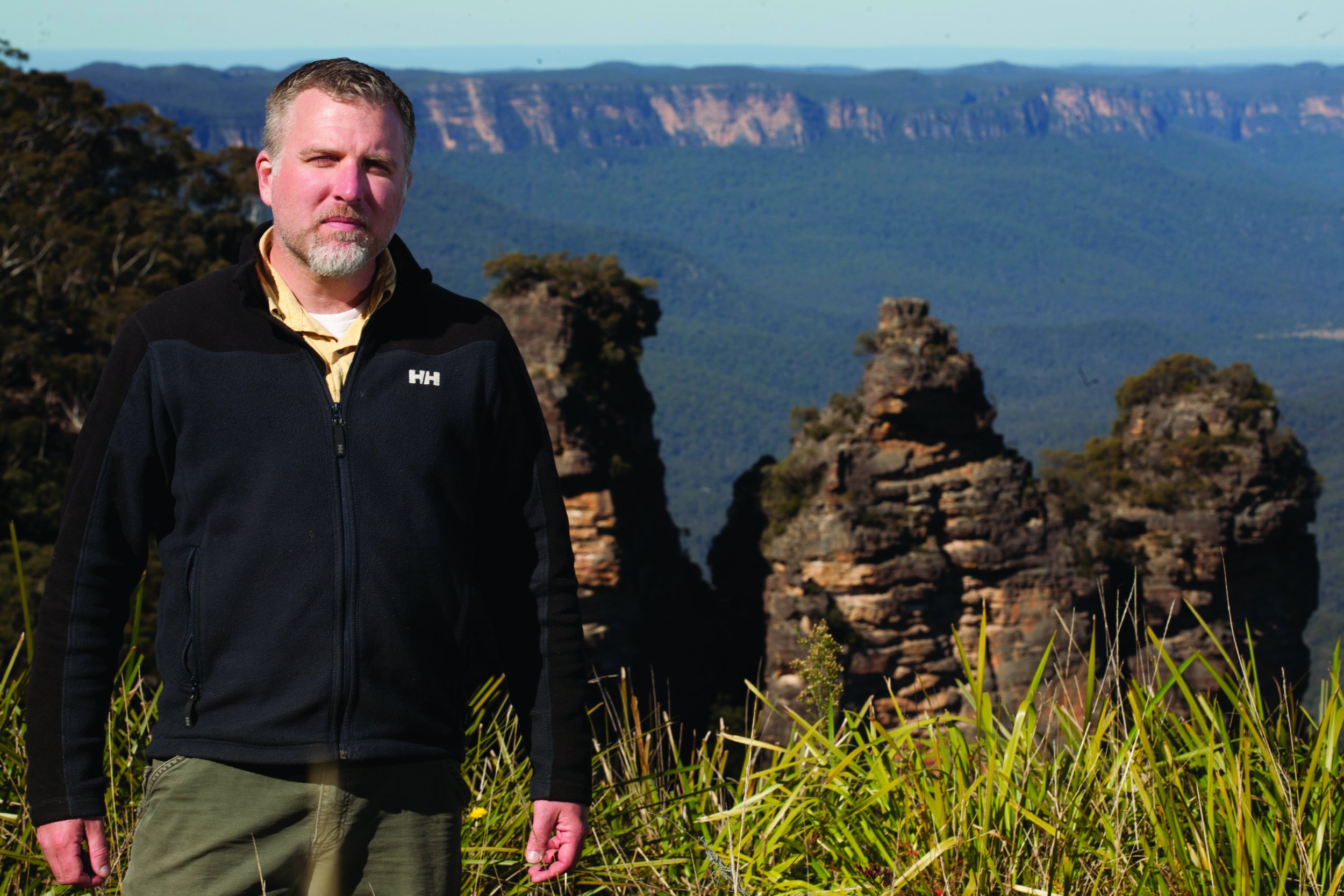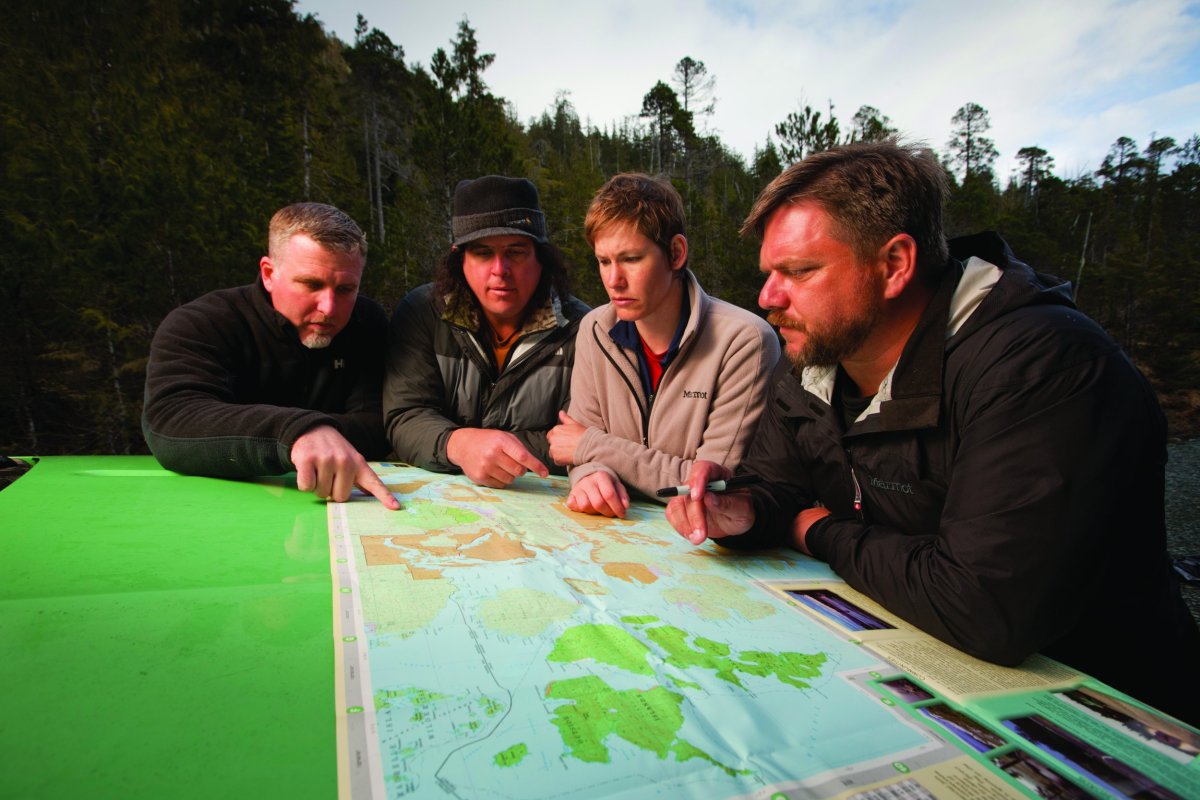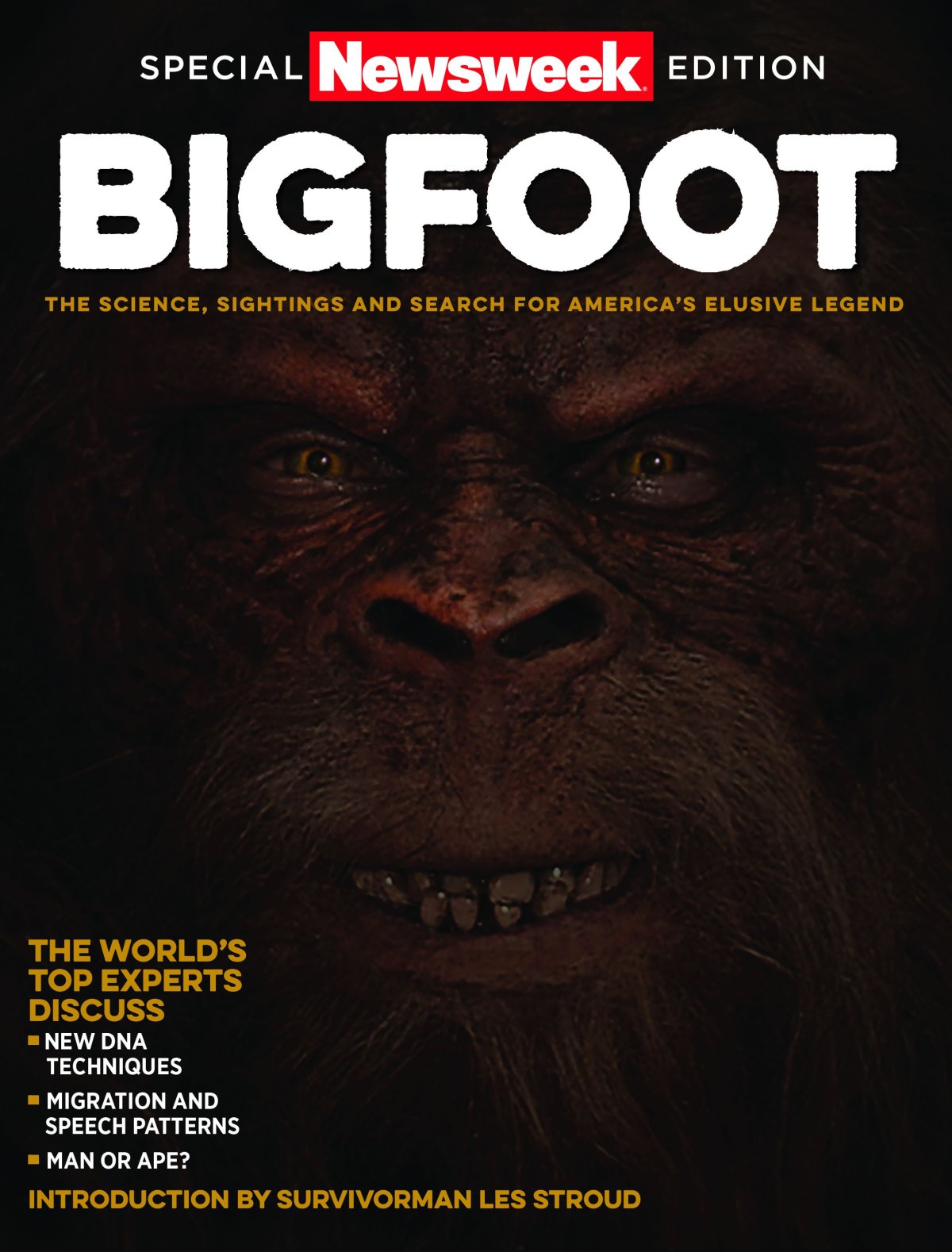
For decades, a dedicated group of men and women have searched for the elusive Bigfoot, a mythical beast that has inspired films, books and research. Cliff Barackman, star of the Animal Planet show Finding Bigfoot, has spent decades hunting for the real deal. This story is excerpted from Newsweek Special Edition's Bigfoot, The Science, Sightings and Search for America's Elusive Legend.
Cliff Barackman is a Bigfooter first and a celebrity second. As one of the stars of Animal Planet's Finding Bigfoot, Barackman travels the country investigating reported Sasquatch sightings. Though the TV cameras have not always been present, this gig is nothing new for the analytical researcher. Barackman has been investigating Bigfoot sightings for 20 years, painstakingly crafting a process he hopes will one day lead to irrefutable evidence that will prove the Sasquatch cynics wrong.
When Barackman first receives word of a Bigfoot sighting, he scrutinizes every word of the witness's tale before launching his search. "They're the expert in what happened to them, and I just let them talk," Barackman says. As he listens, the Bigfooter calls upon his decades of experience to separate fact from fiction. "I'm very acutely aware of what I deem as observation versus interpretation. Being humans, we have the tendency to anthropomorphize animals in general, and Sasquatches even more so because we think we understand their body language and nonverbal communication," he says.
For example, if someone spots a Sasquatch who immediately bolts away, a person may naturally assume the creature fled in fright. But the Bigfoot may simply have been hungry and running toward food, or rushing back home to its family, or any number of reasonable explanations. "There was a Sasquatch up in British Columbia back in the day that was seen fairly recently," Barackman says. "They called him Old Smiley because when the Sasquatch was seen, it would smile. What they didn't understand was that in ape behavior, showing their teeth was a sign of stress. They were saying it was smiling, but it was probably really scared and stressed out."
As is the case with many Bigfoot investigators, Barackman receives thousands of sightings and must be selective about which ones are worth investigating. Dubbing himself an optimist, the Finding Bigfoot star typically considers sightings accompanied by photos deserving of his time. The ubiquity of cellphones has led to a rise in amateur photographers snapping shots of Sasquatch, and Barackman believes this trend will only grow over the next several years. Of course, this also increases the potential for hoaxes. "You kind of have to wade through the BS to find some nuggets," he notes. But even the most suspicious-looking claims can yield results.
While filming an episode of Finding Bigfoot in New York state, Barackman and his team were presented photos of an alleged Sasquatch taken by a high school student. While the young man's photo appeared legitimate to the Bigfoot investigator, Barackman also had a hunch that, teenagers being teenagers, the sighting had been faked. Still, the investigator informed his reluctant team he would be heading to the location for an investigation. "Everybody was saying, 'Cliff, don't waste your time on this,' and I said, 'I don't know, it's a photograph. At the very least, it will make good TV when I call the kid a hoaxer,'" Barackman says. "As it turned out, whatever he took a picture of was standing next to a sign, which would put it at almost 7 feet tall—and the kid's not even close to that tall," Barackman says, explaining why he ruled out the sighting as a hoax and filed it as a possible genuine encounter with the creature.
Once Barackman determines a witness isn't wasting his time with a hoax or practical joke, the investigator dials into what he considers the most interesting part of the account—any details of behavior such as eating, interacting with other species or climbing trees—which he considers rare. Reports of Bigfoot making noises draw the lion's share of Barackman's fascination, as it's a behavior that continues to crop up in report after report. "On the show, we talk about tree knocks a lot, and I have three reports of somebody seeing Bigfoots clap to make those tree knocking sounds." he says. "One person we spoke to last season said they saw the Sasquatch rip off a branch and hit the tree with it."
Listening to eyewitness accounts isn't the only way Barackman deepens his knowledge of the species. "A Bigfoot sighting is great, but at the end of the day it's just a story," Barackman says. In order to take the next step toward finding a Sasquatch, he must truly follow the steps the creature is taking. "I'm a huge advocate of studying the footprints because if you study the footprints, some really interesting things come out, like the behavior of the creatures themselves." Barackman believes footprints can lead to not only discovering one Sasquatch on the move, but several. "I'm particularly interested in the same individuals being found in the same areas over time because that sheds light on population," he says. "Not only density, but the number of animals in that area and where particular animals might be going in certain times of year to utilize food resources." Barackman believes footprints will also play a crucial role in comprehending the biology of the Sasquatches who left them. "You see differences in footprints themselves, which help us understand the inner workings of the bones underneath the skin."

As the Finding Bigfoot star has learned, however, even physical evidence such as footprints can be misleading. The investigator claims he has since changed his mind about footprints found in London, Oregon, in 2012. At the time, Barackman believed the tracks to be "the most significant footprint find in the last 40 years." He recalls his involvement with the discovery, stating, "There were 123 footprints on this lake bed. I ended up casting 72 of them, 64 of which were consecutive, which is really important so you can see the differentiation in the toe position and stuff, which would be the indicator of the reality of the prints."
After spending the past few years examining the prints, though, Barackman now believes they were a fabrication. "I'm trying to teach the Bigfoot community something, honestly—it's OK to be wrong, and you can do so with grace and dignity." He refuses to surrender to cynicism, as he claims has happened to some of his peers.
"I find many people who have been burned stop looking for Bigfoot, and they assume that almost everything is a fabrication or a lie," Barackman says. "So, they really start looking for hoaxers rather than Bigfoot. I would say that I'm just as enthusiastic as I ever was. Sure, there's lots of nonsense out there and a lot of things getting reported could be anything. But they could actually be Bigfoots, too."
This article is excerpted from a Newsweek Special Edition, Bigfoot: The Science, Sightings and Search for America's Elusive Legend.

Uncommon Knowledge
Newsweek is committed to challenging conventional wisdom and finding connections in the search for common ground.
Newsweek is committed to challenging conventional wisdom and finding connections in the search for common ground.
About the writer
To read how Newsweek uses AI as a newsroom tool, Click here.








